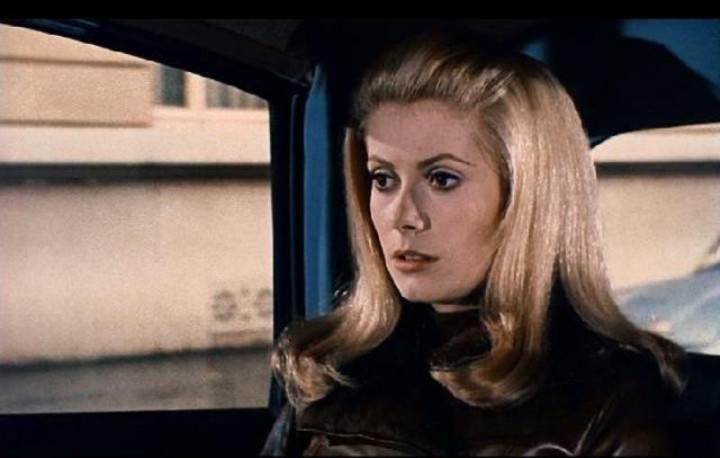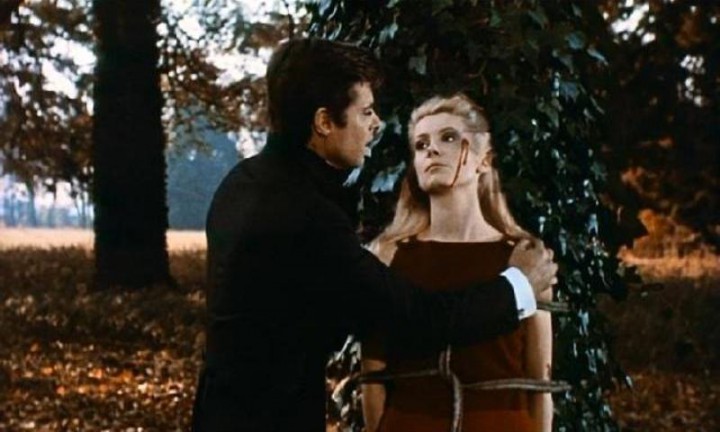When Luis Buñuel’s Belle de Jour (1967) hit America in 1968, it was mildly scandalous — even with the newly-minted MPAA R rating. (This was when the ratings system first appeared.) It wasn’t so much what it showed in terms of actual sex and nudity (it really didn’t warrant an R in that regard), but how it presented both its heroine’s and her clients’ kinks in an offhand manner. Buñuel isn’t in the least shocked or bothered by anything that the film depicts — whether it’s pretend necrophilia, sado-masochism, humiliation, or something so bizarre we don’t even know what it is. The film suggests that Buñuel has seen it all before and, in fact, finds it comical and absurd. Though many thought the film was confessional — and it may be on some level — I’m left to question if Buñuel even found it erotic. To me, it’s a film about the foibles of eroticism that isn’t particularly erotic in itself. Of course, eroticism is a very personal call, and what strikes me as silly may be a major turn-on for somebody else.
The film is deceptive in that Buñuel has tamped down his surrealism to a point that it’s often unclear what is and isn’t real. For example, do Severine (Catherine Deneuve) and Henri (Michel Piccoli) actually meet under a table at a restaurant while their respective spouses more or less just sit there? Well, it’s not presented as a fantasy, while most of Severine’s erotic fantasies — often signalled by the sound of horse carriage bells — are very clearly identified for what they are. But by the time we get to the film’s ending — which can be read at least four different ways, ranging from a bizarre happy ending to outright fantasy to well, you name it — there’s simply no line between fantasy and reality. Perhaps there never really was.
The story itself of a bored housewife entering on a secret life as a part-time prostitute is nothing special. In fact, on its own merits, it’s little more than pure melodrama, and the plot development is often even more so. It’s not a lot more than any number of old movies where a wife turns to some level of prostitution for more altruistic reasons — think of Dietrich in Sternberg’s Blonde Venus (1932) — except that here it’s all about Severine and is pathological, not altrustic. (Last year’s Concussion is pretty much a non-surreal Belle de Jour with a lesbian twist — and, for that matter, Belle de Jour has lesbian overtones in Severine’s relationship with her “madame” (Genevieve Page).) What makes Buñuel’s film unique is what it does with the material — and the ambiguity with which he handles it.
Classic World Cinema by Courtyard Gallery will present Belle de Jour Friday, May 9, at 8 p.m. at Phil Mechanic Studios, 109 Roberts St., River Arts District (upstairs in the Railroad Library). Info: 273-3332, www.ashevillecourtyard.com.







Before you comment
The comments section is here to provide a platform for civil dialogue on the issues we face together as a local community. Xpress is committed to offering this platform for all voices, but when the tone of the discussion gets nasty or strays off topic, we believe many people choose not to participate. Xpress editors are determined to moderate comments to ensure a constructive interchange is maintained. All comments judged not to be in keeping with the spirit of civil discourse will be removed and repeat violators will be banned. See here for our terms of service. Thank you for being part of this effort to promote respectful discussion.